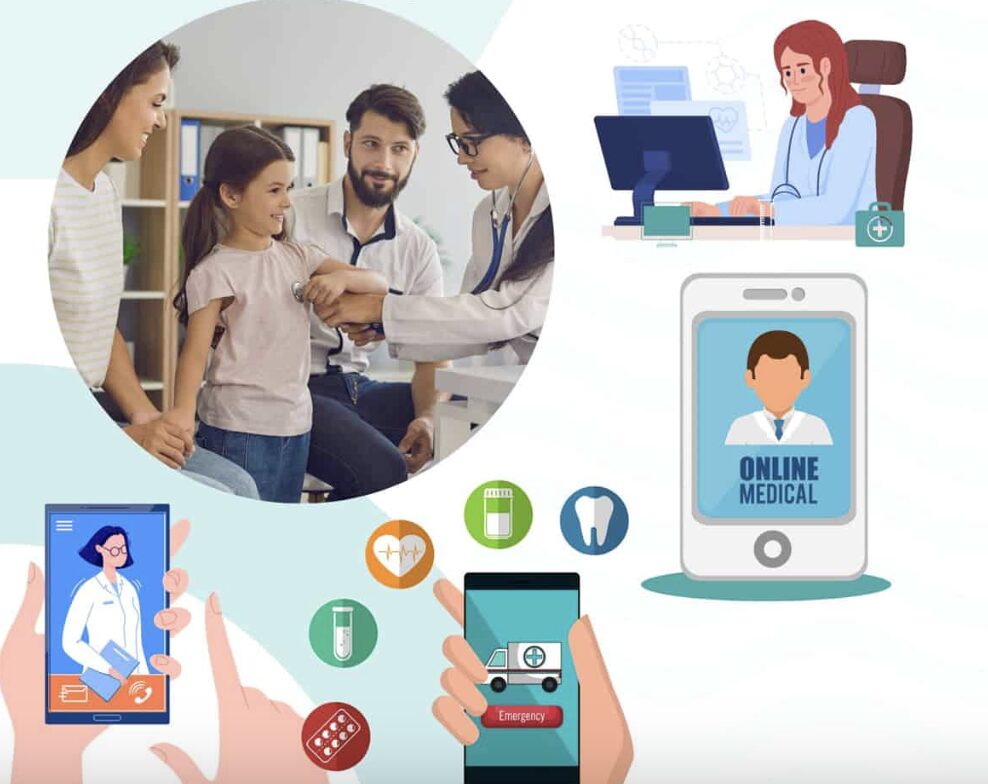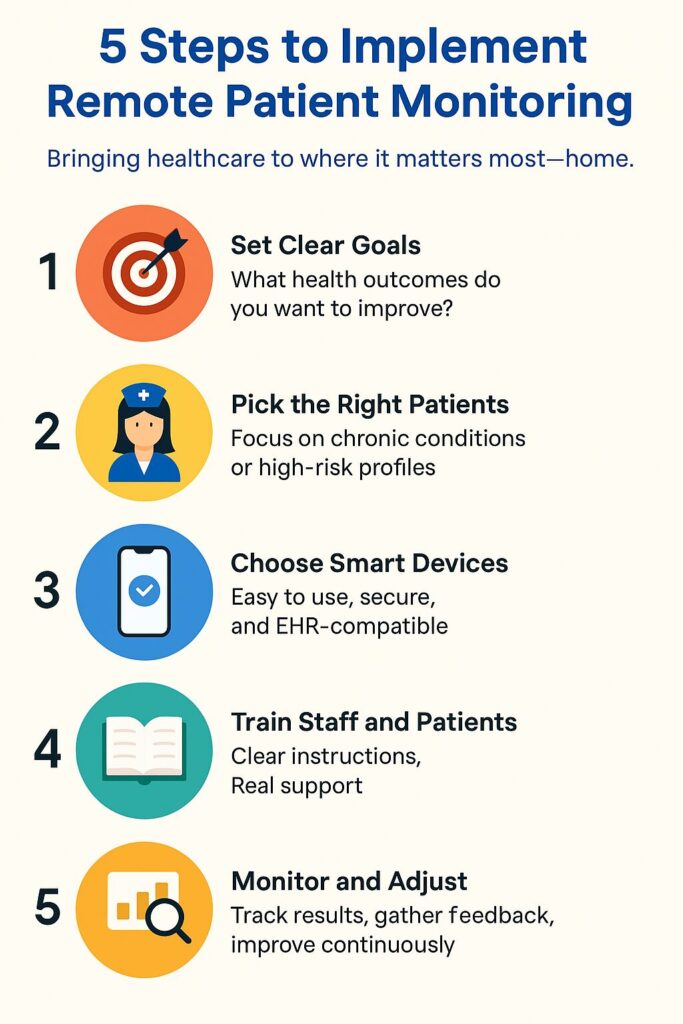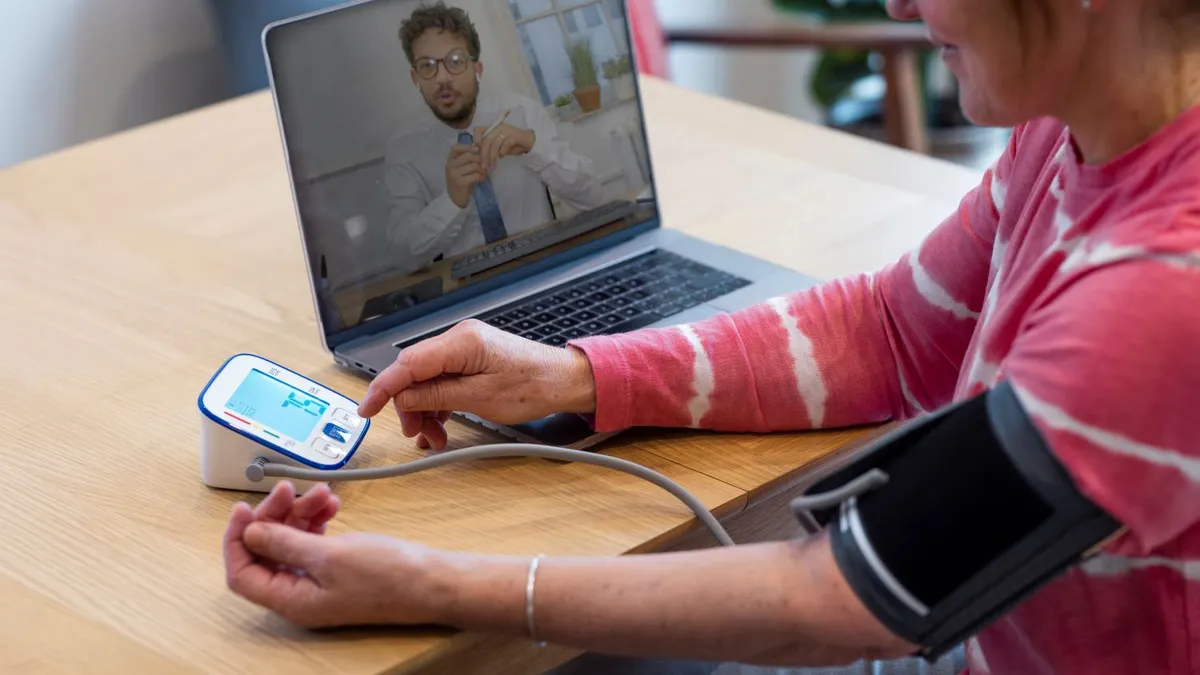Not long ago, checking on a patient meant a physical visit to a clinic or hospital. Today, that’s changing — fast. Thanks to Remote Patient Monitoring (RPM), doctors can now track vital signs, symptoms, and recovery progress without patients ever leaving home.
This shift isn’t just convenient. It’s transforming healthcare. And if you’re wondering how to bring RPM into your medical practice or organization, you’re in the right place.
Musumeci Online – The Podcast. It is perfect for driving, commuting, or waiting in line!
What Is Remote Patient Monitoring?
Remote Patient Monitoring uses connected devices to collect health data from patients in real-time — wherever they are. This data includes things like heart rate, blood pressure, glucose levels, and even oxygen saturation.
It’s like having a “mini-clinic” in a patient’s home that communicates directly with their doctor.
For example, someone with high blood pressure might wear a smart cuff that sends readings to a healthcare team each morning. If something looks wrong, the team can act before it becomes an emergency.

Why RPM Is More Than a Trend
RPM isn’t just another tech buzzword — it’s a game changer. Studies show that hospital readmissions can be reduced by up to 38% with the right monitoring programs. That’s like preventing nearly 4 out of 10 patients from needing a second stay in the hospital.
It’s also good for patient satisfaction. People feel safer knowing their health is being tracked continuously — especially those managing chronic conditions like diabetes, heart failure, or COPD.
Step-by-Step: How to Implement RPM
Let’s break it down into 5 clear steps:
1. Define the Goals
Start by asking: What do we want to achieve?
Is it fewer hospital visits? Better care for chronic patients? Faster recovery after surgery? Setting clear goals will guide every decision.
2. Choose the Right Patients
Not every patient needs RPM. It’s most effective for those with long-term conditions or high risk of complications.
Start small — maybe with 50 patients — and expand as the program proves its value.
Remote Patient Monitoring isn’t about replacing doctors or nurses. It’s about extending their reach and empowering patients.
3. Select Reliable Technology
There are many devices on the market: wearables, home-use monitors, apps. Choose ones that are:
- Easy to use for patients
- Secure and compliant with data protection laws
- Compatible with your electronic health records (EHR)
4. Train Your Team and Your Patients
Even the smartest device is useless if people don’t know how to use it.
Offer training sessions, simple manuals, and direct support.
Make sure your staff knows how to interpret the data and act on alerts.
5. Measure, Learn, Improve
Collect feedback. Track outcomes. Adjust.
Just like any medical treatment, RPM needs monitoring — not just of the patient, but of the system itself.

Real-World Example: A Hospital’s Success Story
One mid-sized hospital in the UK introduced RPM for post-surgery patients. By using smart thermometers and blood pressure monitors, they detected early signs of infection in 17% of cases — allowing fast intervention and reducing serious complications.
One nurse described it this way:
“It felt like we were bringing hospital care into their living rooms.”
Common Challenges — and How to Overcome Them
- Technology resistance: Offer clear benefits and easy-to-follow instructions.
- Privacy concerns: Choose solutions that are fully GDPR or HIPAA compliant.
- Cost worries: Many insurers now support RPM. And the savings from fewer hospitalizations often outweigh the setup costs.
The Future of Care Is Remote — and Personal
Remote Patient Monitoring isn’t about replacing doctors or nurses. It’s about extending their reach and empowering patients. It allows more personalized care, proactive interventions, and a better use of healthcare resources.
In a world where more people are living longer with chronic conditions, RPM is not a luxury — it’s a necessity.


Leave a Reply